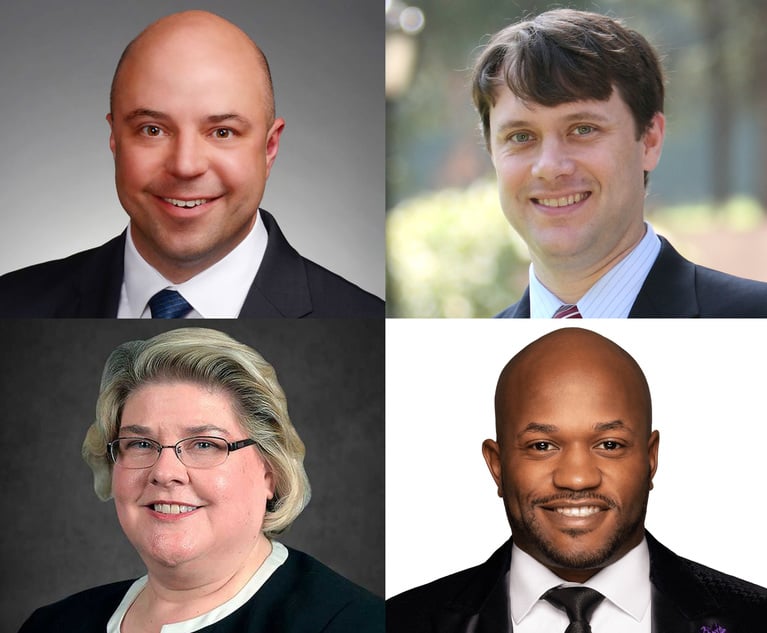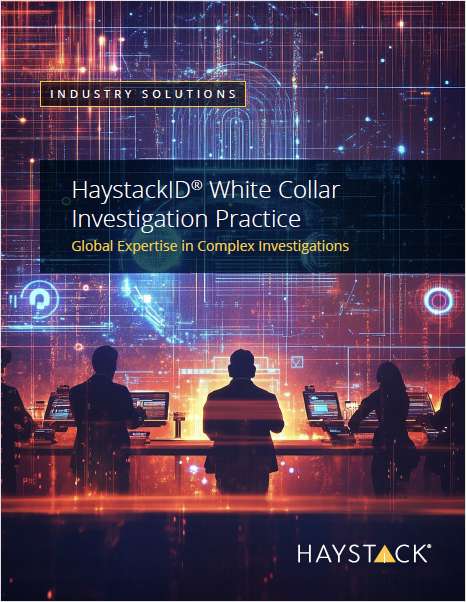 Kobe Bryant speaks during a TV interview after unveiling his venture-capital fund Bryant Stibel on Aug, 22, 2016. Photo: Michael Nagle/Bloomberg
Kobe Bryant speaks during a TV interview after unveiling his venture-capital fund Bryant Stibel on Aug, 22, 2016. Photo: Michael Nagle/BloombergIn Kobe Bryant Crash, Could a Lawsuit Be Coming?
Former U.S. Department of Transportation Inspector General Mary Schiavo, a partner at Motley Rice, said that lawyers would be looking at multiple facts, including the conversation between the air traffic control and the pilot just before Sunday's crash, which killed the LA Lakers star and eight others. "Those next sentences could be billion dollar words," Shiavo said.
January 27, 2020 at 05:32 PM
5 minute read
The original version of this story was published on The Recorder
The cause of the helicopter crash that killed retired Los Angeles Lakers basketball player Kobe Bryant, his 13-year-old daughter and seven other people, remains unknown. The National Transportation Safety Board is investigating the crash, which occurred on a foggy Sunday morning in Los Angeles.
Could there be a lawsuit?
The Recorder talked to former U.S. Department of Transportation Inspector General Mary Schiavo, a partner at Motley Rice, whose firm brought a lawsuit over a crash of the U.S. Army's Black Hawk helicopter, a Sikorsky similar to the one that was taking Bryant and the other passengers to his daughter's basketball game.
Schiavo told me what lawyers were watching.
This article has been edited for length and brevity.
What can you tell us about this helicopter?
This one was a 1991 helicopter, so it's got some years on it. To me, it was interesting it was circling downtown Los Angeles at a very low altitude. To me that says fog, or some kind of problem. Then they headed to Calabasas. Then they turned left and headed to a wooded non-populated area. Those might suggest you're having mechanical [problems], or they were desperately trying to get out of the fog.
When you look at maintenance records, what it was used for in the meantime, what was the reason they went "visual flight rules," instead of IFR [instrument flight rules]? In the Black Hawk Sikorsky case, there were everything from problems with the rotor, the rotor pitch failed, one problem was the seat came loose.
What about the pilot?
It's looking bad at this point for the piloting, but we don't know yet. But taking off in limited visibility on a visual flight rule plan, that call will be questioned by the NTSB. Why didn't they go instrument flight rules, which means air traffic control? So here, the second avenue of examination will be the pilot's performance and whether this is pilot error, which brings us to the third thing lawyers will look at: What is this holding company?
Which holding company?
This aircraft was titled, owned, by a company called Island Express. Island Express is south of Los Angeles, Orange County, and runs visual tours, air tours. They take people out over Catalina Island. And they have a few dozen employees, and they were looking for more employees when this happened, and they took their website down.
They have a number of pilots and do tours. So the media reports that this was Kobe Bryant's helicopter, but the registration does not say that. It says it belongs to Island Express. That will bring us into the legal conundrum of:
- Were the pilots also Island Express pilots?
- What kind of coverage does Island Express have? and
- Were there any special circumstances? Did Kobe or anyone on that plane put pressures on the pilot?
They'll be looking at what kind of flight control Island Express had on this flight. It looks like they owned it, it looks like it's their pilot, so why weren't they more careful? Does Mr. Bryant's estate have any financial interest in this Island Express, or did he turn over ownership of his helicopter to maintain it?
What do you make of the air traffic controller's conversation with the pilot?
I've only heard snippets of air traffic control. The U.S. government runs air traffic controls. They said they were going to follow the aircraft on radar. But then they said, "No, you're way too low." They said, "We can't climb any higher because we're in the clouds." They were really low for LA. That's a little surprising. So they said, "We can't provide you flight forwarding anymore. We can't watch you on radar, you're too low." What we need to hear is the next few sentences. What came next? Did they give them any more instruction?
Why is that?
That's really important, because it is possible air traffic control made a mistake. If that's the case, the U.S. of America foots the bill. … We don't know what the FAA told them next. If they said climb to 2,000 feet and turn left, and there was a mountain in their path, the government is liable. If the next thing is you are not legal, you are in the clouds, you are flying VFR without visual reference, you have to get out of there, you are flying illegally, it's on the pilot. Those next sentences could be billion dollar words.
Is there any circumstance here in which there might not be a lawsuit?
I don't see it.
This content has been archived. It is available through our partners, LexisNexis® and Bloomberg Law.
To view this content, please continue to their sites.
Not a Lexis Subscriber?
Subscribe Now
Not a Bloomberg Law Subscriber?
Subscribe Now
NOT FOR REPRINT
© 2024 ALM Global, LLC, All Rights Reserved. Request academic re-use from www.copyright.com. All other uses, submit a request to [email protected]. For more information visit Asset & Logo Licensing.
You Might Like
View All
Divided State Court Reinstates Dispute Over Replacement Vehicles Fees
5 minute read
Am Law 200 Firm to Defend PUMA in Latest Quarrel Over Patented Shoe Technology

Apple Asks Judge to 'Follow the Majority Practice' in Dismissing Patent Dispute Over Night Vision Technology

Who Got the Work: 16 Lawyers Appointed to BioLab Class Action Litigation
4 minute readTrending Stories
- 1Gibson Dunn Sued By Crypto Client After Lateral Hire Causes Conflict of Interest
- 2Trump's Solicitor General Expected to 'Flip' Prelogar's Positions at Supreme Court
- 3Pharmacy Lawyers See Promise in NY Regulator's Curbs on PBM Industry
- 4Outgoing USPTO Director Kathi Vidal: ‘We All Want the Country to Be in a Better Place’
- 5Supreme Court Will Review Constitutionality Of FCC's Universal Service Fund
Who Got The Work
Michael G. Bongiorno, Andrew Scott Dulberg and Elizabeth E. Driscoll from Wilmer Cutler Pickering Hale and Dorr have stepped in to represent Symbotic Inc., an A.I.-enabled technology platform that focuses on increasing supply chain efficiency, and other defendants in a pending shareholder derivative lawsuit. The case, filed Oct. 2 in Massachusetts District Court by the Brown Law Firm on behalf of Stephen Austen, accuses certain officers and directors of misleading investors in regard to Symbotic's potential for margin growth by failing to disclose that the company was not equipped to timely deploy its systems or manage expenses through project delays. The case, assigned to U.S. District Judge Nathaniel M. Gorton, is 1:24-cv-12522, Austen v. Cohen et al.
Who Got The Work
Edmund Polubinski and Marie Killmond of Davis Polk & Wardwell have entered appearances for data platform software development company MongoDB and other defendants in a pending shareholder derivative lawsuit. The action, filed Oct. 7 in New York Southern District Court by the Brown Law Firm, accuses the company's directors and/or officers of falsely expressing confidence in the company’s restructuring of its sales incentive plan and downplaying the severity of decreases in its upfront commitments. The case is 1:24-cv-07594, Roy v. Ittycheria et al.
Who Got The Work
Amy O. Bruchs and Kurt F. Ellison of Michael Best & Friedrich have entered appearances for Epic Systems Corp. in a pending employment discrimination lawsuit. The suit was filed Sept. 7 in Wisconsin Western District Court by Levine Eisberner LLC and Siri & Glimstad on behalf of a project manager who claims that he was wrongfully terminated after applying for a religious exemption to the defendant's COVID-19 vaccine mandate. The case, assigned to U.S. Magistrate Judge Anita Marie Boor, is 3:24-cv-00630, Secker, Nathan v. Epic Systems Corporation.
Who Got The Work
David X. Sullivan, Thomas J. Finn and Gregory A. Hall from McCarter & English have entered appearances for Sunrun Installation Services in a pending civil rights lawsuit. The complaint was filed Sept. 4 in Connecticut District Court by attorney Robert M. Berke on behalf of former employee George Edward Steins, who was arrested and charged with employing an unregistered home improvement salesperson. The complaint alleges that had Sunrun informed the Connecticut Department of Consumer Protection that the plaintiff's employment had ended in 2017 and that he no longer held Sunrun's home improvement contractor license, he would not have been hit with charges, which were dismissed in May 2024. The case, assigned to U.S. District Judge Jeffrey A. Meyer, is 3:24-cv-01423, Steins v. Sunrun, Inc. et al.
Who Got The Work
Greenberg Traurig shareholder Joshua L. Raskin has entered an appearance for boohoo.com UK Ltd. in a pending patent infringement lawsuit. The suit, filed Sept. 3 in Texas Eastern District Court by Rozier Hardt McDonough on behalf of Alto Dynamics, asserts five patents related to an online shopping platform. The case, assigned to U.S. District Judge Rodney Gilstrap, is 2:24-cv-00719, Alto Dynamics, LLC v. boohoo.com UK Limited.
Featured Firms
Law Offices of Gary Martin Hays & Associates, P.C.
(470) 294-1674
Law Offices of Mark E. Salomone
(857) 444-6468
Smith & Hassler
(713) 739-1250








